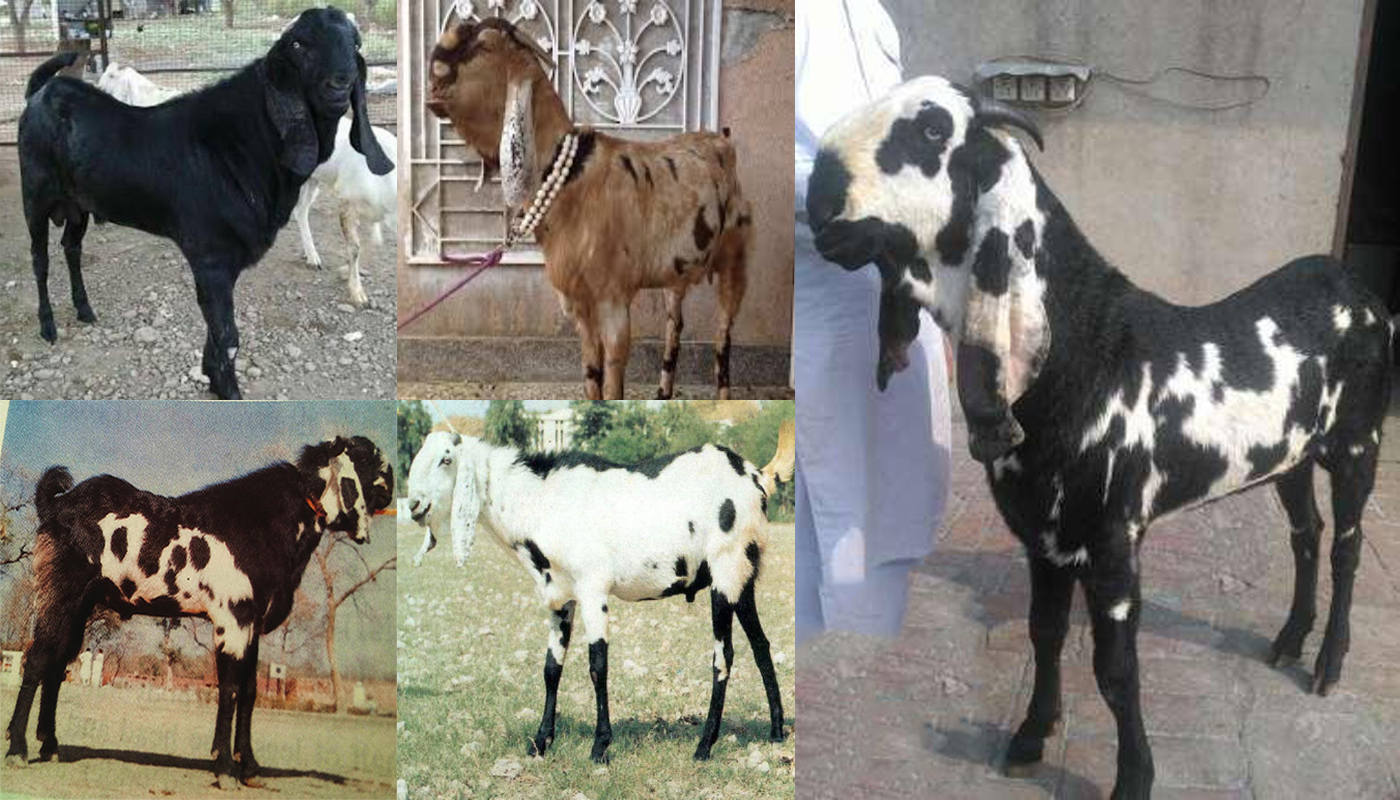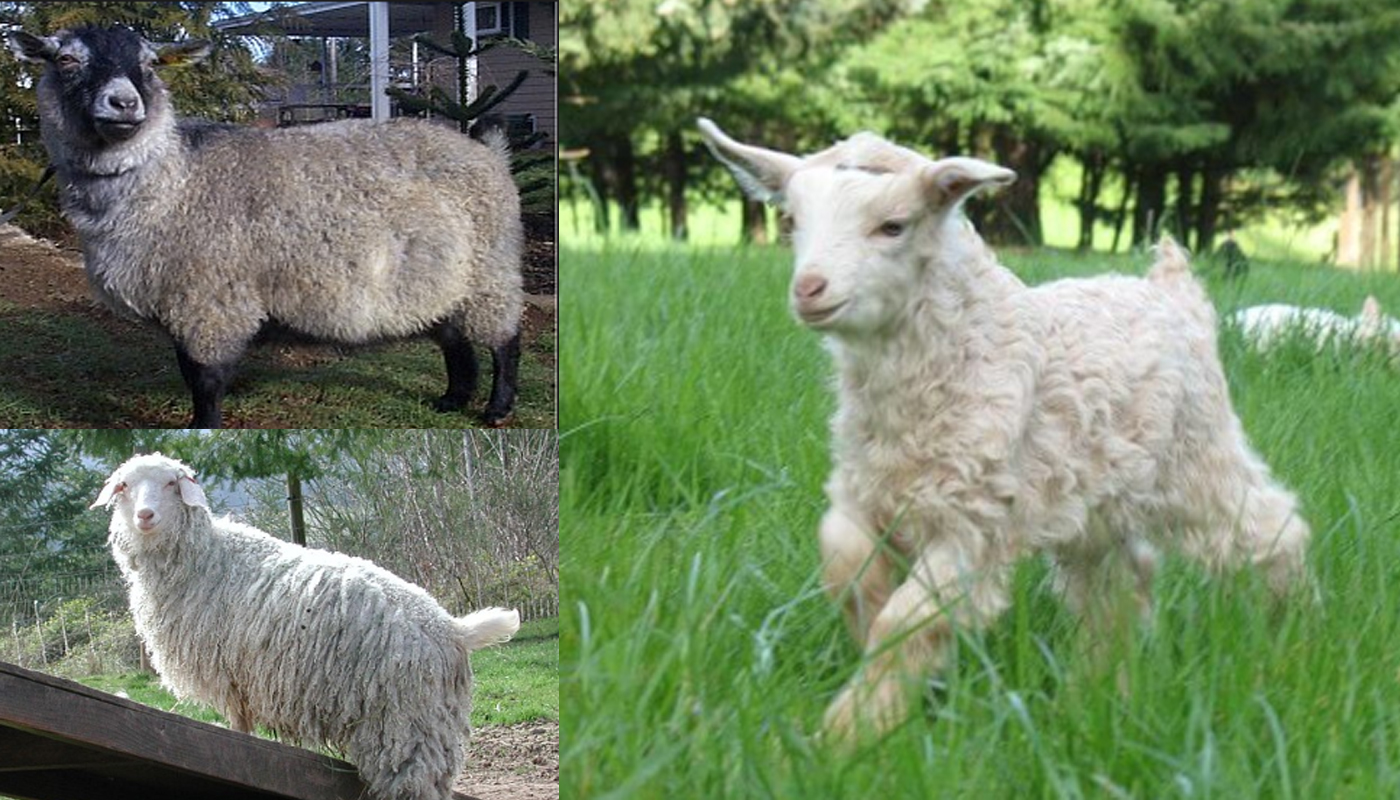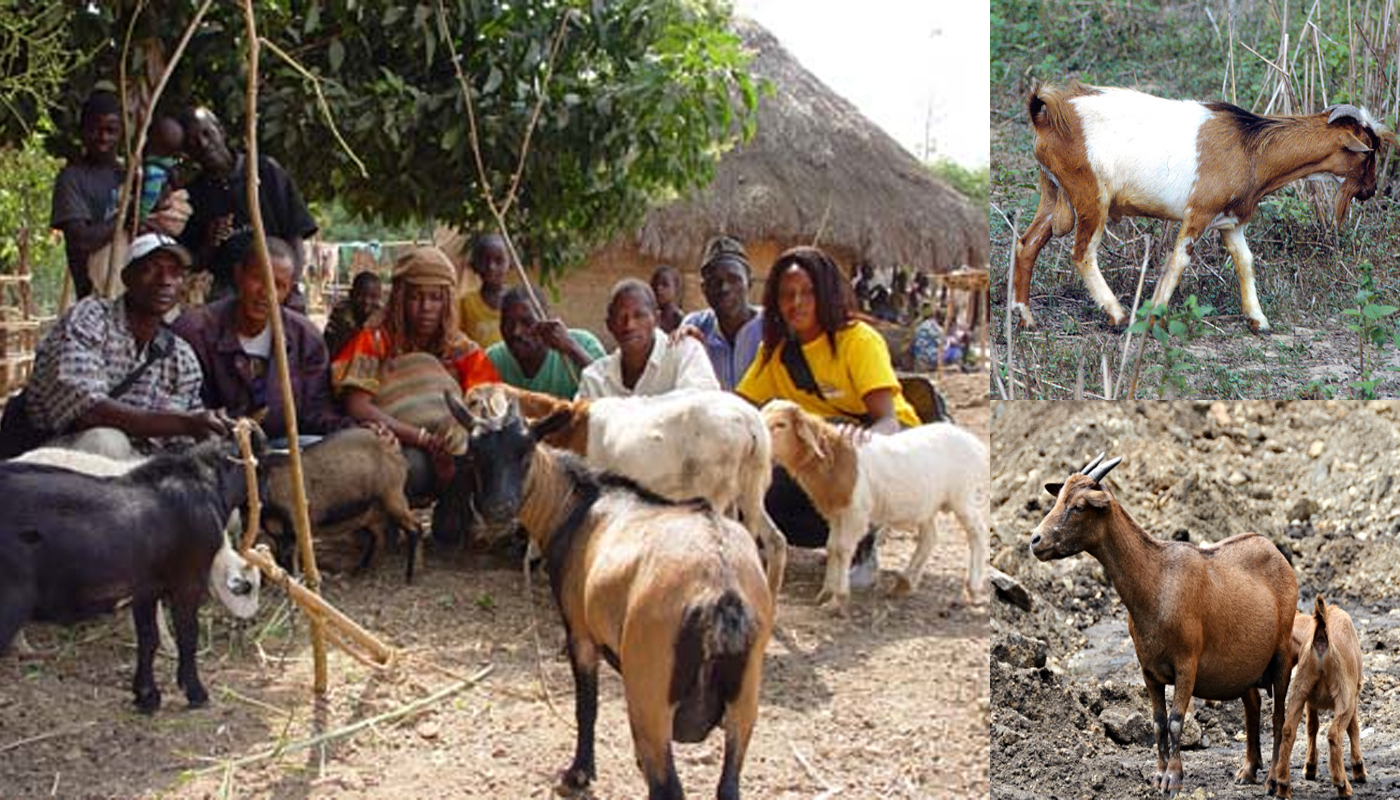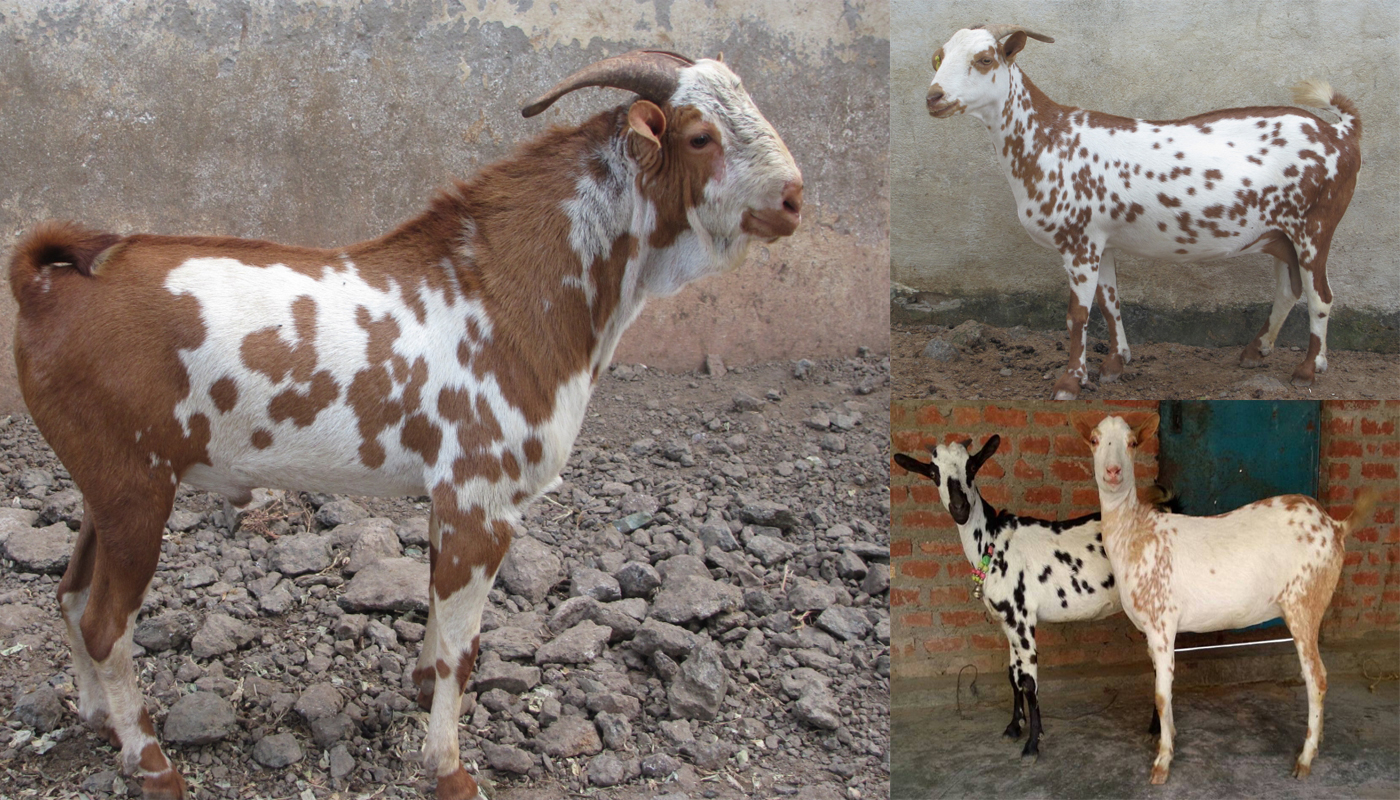
These goats have a relatively short body compared to other goat breeds. They are a very valuable source of income in Bangladesh as they provide the communities with milk, meat and leather.
They are a very hardy breed that adapts to all sorts of environments and can adjust its eating habits accordingly.
They are an even-tempered breed with a lot of energy and are also a great pet if they are raised and trained right.
Black Bengal Goat Quick Profile Overview
| The Black Bengal goat is a very valuable commodity that provides various communities with milk, meat and leather. | |
| Country of Origin: | Bangladesh |
| Other Names: | None |
| Breed Size: | Small |
| You may Also Like: | 11 Smaller and Miniature Goat Breeds |
| Main Purpose: | Meat and skin |
| Can be used for | Breeding, Meat, Milk, Pets |
| You may Also Like: | 10 Best Goat Breeds for Meat Production |
| You may Also Like: | Top 10 Best Dairy Goat Breeds |
| Temperament: | They can be inquisitive and friendly if raised correctly |
| Good with Kids? | They are fine around supervised children. But they do have horns which have the potential for trouble with unneutered male goats.. |
| You may Also Like: | 10 Best Goat Breeds to Keep as Pet |
| Ideal Environment: | They love vegetables, grasses and leaves. As they are a relatively small breed, they do not require a large amount of space. Just a pasture with enough grazing greens. |
| Ideal Climate: | They are tolerant of all climates |
| Conservation Status: |
Not Listed by the *ALC Common |
| Health Issues? | No known health issues. They are a hardy breed of goat |
| Good Starter Goat? | Yes, they are relatively low maintenance. Do not take up too much room and do not require large amounts of feed. |
| Goat Associations: | As they are not really many in the USA you will have to check with the Goat Associations which are listed under “Useful Links” in this article. |
| Goat Clubs: | There are no known Black Bengal Goat Clubs in the USA |
| Note: *ALC stands for American Livestock Conservancy | |
PHYSICAL CHARACTERISTICS
| They have a small cow shaped head and their bodies are short and compact. Their legs are quite short too. | ||
| Color(s): |
Black, but there are some color variations of the black Both the doe and the buck share the same coat color |
|
| Goat⇒ | Doe | buck |
| Breed Weight: | 44 lbs. | 55 lbs. |
| Breed Height: | 39 cm at withers | 56 cm at withers |
| Hair: | Short and smooth | Same as the does |
| Ears: | Their ears stand to the sides and fold over slightly. They are the same color as the goat’s coat | Same as the does |
| Horns: | They do have horns but are disbudded at around 3 weeks of age | They do have horns but are disbudded at around 3 weeks of age |
| Matures at age: | 5 to 15 months | 3 to 15 months |
| Puberty Age: | 5 to 6 months | 4 to 9 months |
| Breeding Age: | 18 months | 1 year |
| Breeding Traits: | Can have kids twice a year | Cover 20 to 30 does in 1 season |
DOE BREEDING & MILKING INFORMATION
| The Black Bengal goat can be bred twice a year | |
| Breeding Period/cycle: | Usually lasts 12 to 36 hours Ave. 21 days/18 to 24 days |
| Gestation Period: | 148 days |
| Kids: | 1 to 4 kids per litter |
| Good Mothers? | Yes, they will look after the kid until it is weaned |
| Lactation Period: | 110 to 125 days |
| Milking From: | 4 to 6 weeks after kidding |
| Milk Quality: | Acceptable, 400 to 700 grams of milk per day |
| Milking Level: | Semi-difficult, They are a little tricky to milk |
| You may Also Like: | Top 10 Best Dairy Goat Breeds |
MEAT PRODUCTION
| They have a good meat to bone ratio for a good quantity of nutritious goats meat | |
| Meat Production? | They have a good quality of meat and is relied on for the production of meat. The goats are fed really well for meat production. |
| Req. Maturity Weight: | Doe 25 to 20 lbs. and up Buck 50 to 55 lbs. and up |
| You may Also Like: | 10 Best Goat Breeds for Meat Production |
LEATHER PRODUCTION
| They have a good leather yield and produce a very fine quality of leather used in various leather products. | |
| Leather Production? | Good |
| Types of Leather: | Various leather including velour, chamois, etc. are made from the skin of this breed. |
| Age they Produce from: | From 3 months to 2 years old |
GOOD TO KNOW
| A little bit more information that may be found useful to know about the Black Bengal Goat breed | |
| Where to buy them: | You will have to check with local goat farmers or the various goat associations (listed under “Useful Links” in this article) for any breeders in or around your area or the US. |
| Agility: | They are as agile as any goat breed and enjoy the challenge of scaling various objects that pique their interest. |
| Interact with other animals: | They are very sociable animals and enjoy interacting with any livestock breed that does not pose a threat or disrupt their peace. |
| General Information: | One Black Bengal goat that weight around 44 lbs. will give about 11 kg’s of good quality meat and fetch a good price for their skin.
The goat is also immune to a lot of diseases and it can also eat just about any type of vegetable making it easy to feed and maintain. |
HISTORY
There is not much history available on this breed except that it comes from around the West Bengal, Bihar, Orissa and Bangladesh areas of India.
It has been one of the main sources of income for the poorer population with the size of the breed enabling them to be housed in smaller spaces and run on basically any landscape type.
The goat is also able to give birth of between 1 – 3 kids twice a year making her a very good breeder to increasing the herd and enabling the farmer to keep a good meat, milk and skin production going.
Thus, playing a very important role in reducing the unemployment and poverty in these areas with these goats being able to provide an income source.
VIDEO
USEFUL LINKS
- American Goat Society(AGS)
- American Goat Federation (AGF)
- American Dairy Goat Association (ADGA)
- American Cashmere Goat Association (ACGA)
- Canadian Meat Goat Association (CMGA)
- Canadian Goat Society (CGS)
- Animal Shelter (ASPCA)
- American Veterinary Medical Association
- American Poultry Association
- American Animal Welfare Society
- American Animal Control
- American Animal Husbandry Society
 Verata Goat Breed – Everything You Need to Know
Verata Goat Breed – Everything You Need to Know Zalawadi Goat Breed – Everything You Need to Know
Zalawadi Goat Breed – Everything You Need to Know 11 Smaller and Miniature Goat Breeds
11 Smaller and Miniature Goat Breeds Beetal Goat Breed – Everything You Need to Know
Beetal Goat Breed – Everything You Need to Know Managing Hoof Health in Goat Breeds: Tips for Preventing Lameness
Managing Hoof Health in Goat Breeds: Tips for Preventing Lameness Pygora Goat Breed – Everything You Need to Know
Pygora Goat Breed – Everything You Need to Know Danish Landrace Goat Breed – Everything You Need to Know
Danish Landrace Goat Breed – Everything You Need to Know Choosing the Perfect Goat Breed for Your Homestead: A Comprehensive Guide
Choosing the Perfect Goat Breed for Your Homestead: A Comprehensive Guide Booted Goat Breed – Everything You Need to Know
Booted Goat Breed – Everything You Need to Know West African Dwarf Goat Breed – Everything You Need to Know
West African Dwarf Goat Breed – Everything You Need to Know Girgentana Goat Breed – Everything You Need to Know
Girgentana Goat Breed – Everything You Need to Know Barbari Goat Breed – Everything You Need to Know
Barbari Goat Breed – Everything You Need to Know